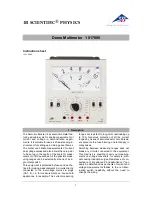
LTPH-TP-1047-01, Issue 1
Loopback Operation
H2TU-R-402 List 5E
March 12, 2001
29
Special Loopback Commands
In addition to the GNLB loopback command mode, a HiGain system can be configured for one of three special
loopback command modes. These command modes, A2LB, A3LB, and A4LB, are selected from the ADC
Options maintenance terminal screen or by using the MODE and SEL buttons on the H2TU-C front panel. Once
a loopback mode is activated, other loopback commands can be sent by a test set connected to the craft port on
the H2TU-C or H2TU-R front panel.
A2LB through A4LB are special, addressable, repeater loopback modes that are supported by the H2TU-R-402
(see
for a list of Addressable Repeater Loopback Commands).
These loopback modes provide the HiGain system with sophisticated maintenance and troubleshooting tools.
A2LB is patterned after the Teltrend addressable T1 repeater loopbacks. A3LB and A4LB are patterned after the
Wescom addressable T1 repeater loopbacks.
These addressable repeater loopback modes have been enhanced to handle the specific requirements of the
following HiGain customers:
•
A2LB (Teltrend) = Southwestern Bell
•
A3LB (Wescom) = New England Telephone, Bell Atlantic
•
A4LB (Wescom Mod 1) = New York Telephone
A2LB can be configured to do one of the following:
•
Block the arming code (after 2 seconds) from exiting the H2TU-C into the network, and replace it with the
AIS code.
•
Unblock the AIS code by executing the Far End Activate code.
A3LB and A4LB are now identical. Previously, they incorporated different SMJK loopback commands, which
are now under control of the LPBK setting.
L
OOPBACK
T
EST
P
ROCEDURES
The following sections provide step-by-step test procedures for verifying the integrity of the HDSL2 channels at
every module location as well as the DS1 channels to the customer and the local DSX-1 interface.
GNLB Test Procedures
is a graphical representation of the various loopback configurations with the associated
GNLB commands shown. Refer to
for a description of these commands.
To perform the GNLB loopback test procedure:
1
Have the CO tester send the NREM (3-in-7) inband loopup code for 5 seconds. The LBK LED on the front
panel should be a steady yellow, and the loopback mode should be identified on the Monitor screen.
2
Have the CO tester transmit a DS1 test signal towards the H2TU-R and verify that the returned (looped) signal
to the test set is error-free.
3
If step 2 fails, have the CO tester transmit the 3-in-5 inband loopdown code.
4
Have the CO tester send the NLOC (4-in-7) inband loopup for 5 seconds. You should be able to observe the
NLOC message on the Monitor screen.
5
Repeat Step 2. If the test passes, the problem is in the downstream direction. If it fails, the problem is in the
upstream direction.
















































